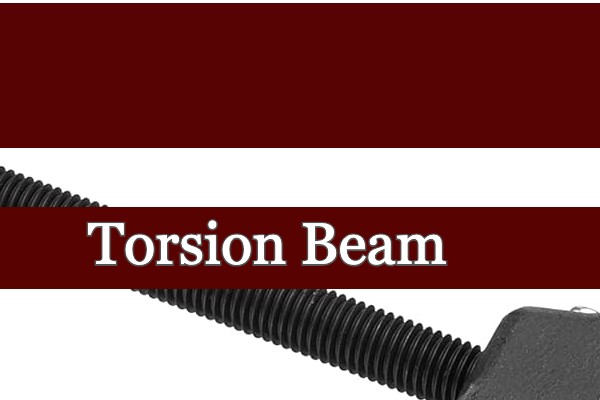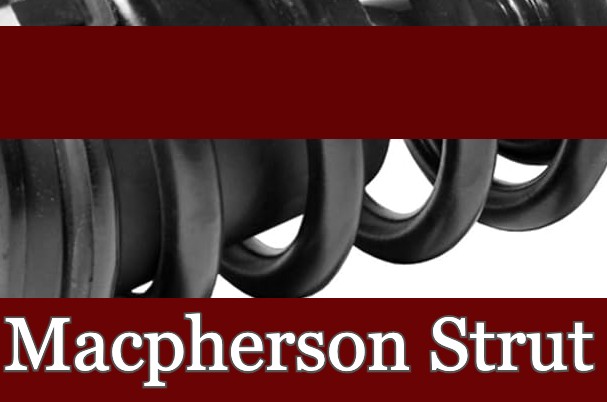The Torsion Beam vs MacPherson Strut debate has long intrigued automotive enthusiasts and engineers alike. As two of the most common types of suspension systems in modern vehicles, each design has its own unique set of characteristics, advantages, and drawbacks.
From compact cars to SUVs, the choice between a torsion beam or Macpherson strut suspension can significantly impact a vehicle’s ride quality, handling dynamics, and overall driving experience. One design favors simplicity and cost-effectiveness, while the other emphasizes performance and versatility.
Whether you’re a seasoned car enthusiast or simply curious about the mechanics behind your daily commute, understanding these fundamental differences will empower you with valuable insights into one of the most critical aspects of automotive engineering. So stay with us to uncover the secrets lying beneath your car’s chassis.
What is a Torsion Beam?

A torsion beam, also known as a twist beam, is a crucial component in many automotive suspension systems. It consists of a solid beam that connects the rear wheels and provides stability while allowing for vertical movement.
In practical terms, the torsion beam functions as a crucial part of the semi-independent suspension system commonly found in compact and midsize vehicles.
The torsion beam system operates through the concept of twisting resistance, which allows it to effectively manage vertical movement and dampen vibrations experienced by the rear wheels.
Its functionality depends on the torsional rigidity of the beam structure, which influences its ability to counteract rotational forces while maintaining stability during dynamic maneuvers.
As a result, the Torsion Beam contributes significantly to the overall handling and maneuverability of the vehicle by effectively mitigating oscillations and enhancing road adherence.
Read also: Double Wishbone vs Torsion Beam Suspensions
What is MacPherson Strut?

The MacPherson strut, named after its inventor Earle S. MacPherson, is a prominent type of automotive suspension system widely utilized in modern vehicles.
This innovative design integrates a shock absorber and a coil spring into a single unit, providing pivotal support for the vehicle’s weight while also dampening vibrations and impacts experienced during operation.
The incorporation of the strut into the suspension system not only contributes to the structural integrity of the vehicle but also facilitates enhanced handling characteristics and ride comfort.
Moreover, the MacPherson strut embodies an intricate assembly that includes a damper element for managing kinetic energy transfer and mitigating oscillations within the chassis framework.
Read also: MacPherson Strut Vs Coilover – What Is The Difference?
Torsion Beam vs Macpherson Strut – Comparing Side by Side
Now, we’re going to explore the key differences between torsion beam and MacPherson strut suspensions to shed light on their respective strengths and weaknesses to demystify this enduring debate once and for all.
Design
The torsion beam mechanism is characterized by its simplicity and cost-effectiveness, with its singular transverse beam serving as a pivotal component for supporting the vehicle’s weight, while also providing lateral stability.
Conversely, the Macpherson strut arrangement embodies a more sophisticated design ethos, featuring a telescopic shock absorber integrated within a perpendicular housing assembly that affords enhanced damping capabilities and improved ride comfort.
The torsion beam configuration is renowned for its inherent limitation in managing vertical wheel movements independently, thereby engendering suboptimal handling characteristics during dynamic maneuvers. In contrast, the Macpherson strut architecture endows vehicles with superior wheel articulation capacities via its individualized control over vertical motions.
Performance in Different Conditions
Torsion beam suspension excels in providing stability during straight-line driving, making it a favorable choice for city commuting and highway cruising. On the other hand, the Macpherson strut offers superior handling and cornering ability, making it more suitable for spirited driving on winding roads or tracks.
In off-road conditions, torsion beam suspension demonstrates better durability and robustness due to its simple design with fewer moving parts. This makes it a preferred choice for vehicles that are regularly subjected to rough terrain or uneven surfaces.
Conversely, the Macpherson strut exhibits improved performance in handling sudden obstacles and undulations due to its wheel movement capabilities, making it an ideal option for light off-roading or rally-driving scenarios.
Ride Quality
The torsion beam suspension offers a more stable and predictable ride, especially during straight-line driving. However, the trade-off often comes in terms of ride comfort and handling, as the torsion beam suspension can be prone to more body roll and less precise control during cornering.
On the other hand, the MacPherson strut suspension offers superior ride quality due to its independent wheel movement and better shock absorption. This results in a smoother and more controlled driving experience, especially over uneven surfaces. The design also allows for more precise tuning of the suspension geometry, providing improved stability and handling at higher speeds.
Besides, the Macpherson strut’s independent wheel movement allows for greater responsiveness and agility when navigating through twists and turns.
Durability
The torsion beam, with its simpler design and fewer moving parts, can often be more durable in rough driving conditions. Its sturdy construction makes it less susceptible to damage from potholes or off-road terrain.
On the other hand, the Macpherson strut’s components may require more frequent maintenance and replacement due to its higher complexity.
Moreover, the Macpherson strut’s ability to provide better handling and stability at high speeds may come at a cost in terms of long-term durability. The constant movement and stress placed on its various linkages and bearings can lead to faster wear and tear compared to the more robust torsion beam setup.
Application
Torsion beam setups are typically located at the rear of vehicles and have been criticized for limiting wheel articulation and overall handling performance. Meanwhile, Macpherson struts are commonly found at the front wheels, allowing for better control over suspension movement and enhanced stability.
In terms of application, the torsion beam excels in providing a comfortable ride on smooth roads and urban environments where agility is key. Its position close to the ground ensures better handling in city traffic and parking garages.
Conversely, the Macpherson strut is designed for enhanced performance on rough or uneven terrains, thanks to its greater ground clearance and advanced dampening abilities. This allows for a smoother ride when encountering bumps or potholes while maintaining stability at higher speeds.
The Macpherson strut suspension is often seen in larger, more powerful cars due to its superior handling capabilities. Positioned at a larger angle compared to the torsion beam, the Macpherson strut offers better stability during cornering and maneuvering at high speeds.
Cost
The initial cost of torsion beam suspension is often lower than that of the Macpherson strut due to its simpler design and fewer components. However, maintenance and repair costs over time can be higher for torsion beam suspensions as they are more prone to wear and tear.
On the other hand, while Macpherson struts may have a higher upfront cost, they generally require less maintenance and repairs in the long run. This is due to their more robust construction and better handling of wear and tear.
Additionally, Macpherson struts offer better performance in terms of stability and handling, which can provide added value for those who prioritize driving experience.
Pros and Cons of Torsion Beam
In this world, every element has its own set of advantages and disadvantages, and the torsion beam is no exception. Let’s explore the strengths and weaknesses of the Torsion beam.
Pros:
- Can be tuned to provide optimal stability during straight-line driving and moderate cornering situations, enhancing overall driving comfort.
- Offers space-saving benefits, making it suitable for compact vehicle designs.
- Delivers good stability and handling characteristics during straight-line driving.
- Minimizes weight and complexity compared to other suspension systems.
- Can offer a smoother ride on well-maintained roads due to its simplicity.
Cons:
- Torsion beam suspensions may not provide as much comfort or isolation from road imperfections as other types of suspensions.
- They can transmit more road noise and vibrations into the cabin compared to more sophisticated suspension systems.
- Torsion beam suspensions may struggle to handle rough terrain or uneven surfaces, impacting off-road performance.
Pros and Cons of MacPherson Strut
Certainly, despite their benefits, MacPherson’s struts also come with limitations. Let’s now outline the advantages and disadvantages specific to MacPherson’s strut.
Pros:
- MacPherson struts are known for their ease of installation and maintenance, which can result in reduced labor costs during assembly and servicing.
- They provide good steering geometry and are well-suited for front-wheel-drive vehicles.
- The design allows for easy integration with anti-roll bars and other suspension components to improve overall vehicle handling.
- Facilitates smoother ride comfort by effectively absorbing road irregularities and vibrations.
- MacPherson struts are relatively easy to service and maintain compared to more complex suspension systems, which can reduce long-term maintenance costs for vehicle owners.
Cons:
- MacPherson struts may have limited adjustability compared to other suspension types, which can affect the ability to fine-tune handling characteristics.
- They also tend to exhibit more noise and harshness under certain conditions than some other suspension designs.
- MacPherson strut systems are generally not as easily upgradeable or tunable as more complex independent suspension setups.
Conclusion
Choosing between a torsion beam suspension and a Macpherson strut suspension depends on several factors. If you value simplicity and cost-effectiveness, the torsion beam may be more suitable for your needs. Torsion beams are less complex and lighter, making them an ideal choice for smaller vehicles or those with limited space in the rear axle area.
On the other hand, Macpherson struts offer better handling and stability due to their design, making them a popular choice for larger vehicles and high-performance cars. They also provide more flexibility in adjusting camber angles, which can be beneficial for fine-tuning the vehicle’s alignment.
Torsion beams are also known for their durability and robustness, requiring less maintenance over time compared to Macpherson struts. However, if you prioritize sporty driving dynamics, the Macpherson strut may be the better option as it provides improved cornering and overall responsiveness.
Ultimately, the decision between these two types of suspensions should consider your driving preferences, vehicle size, performance requirements, and budget constraints.